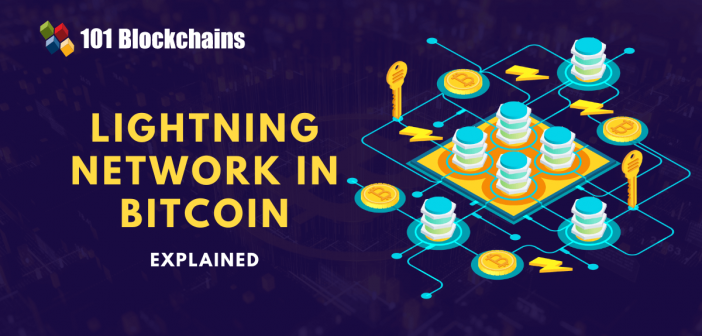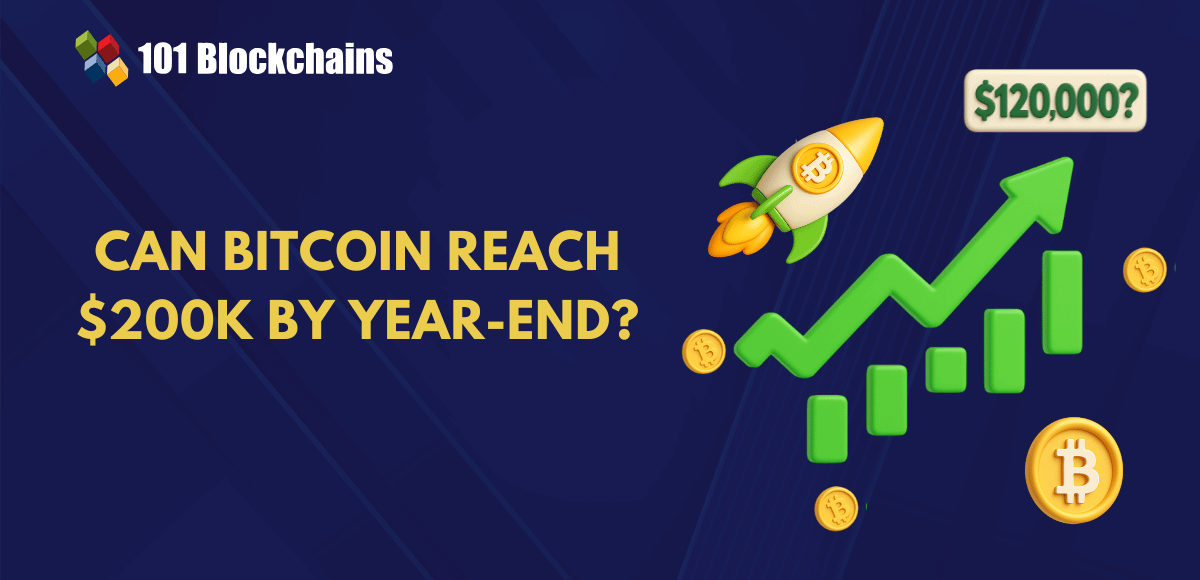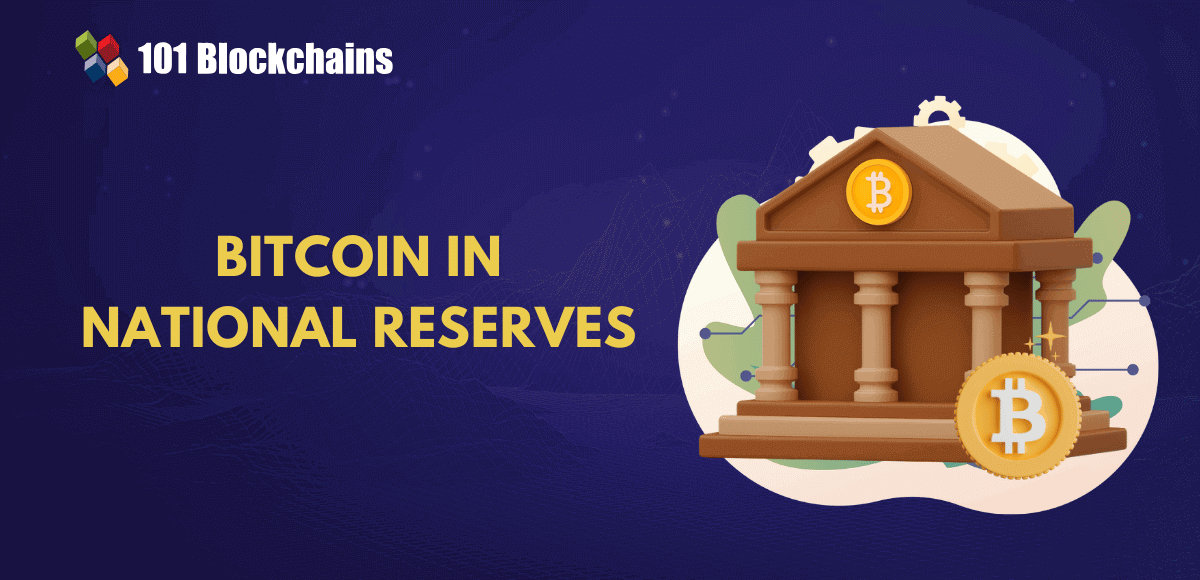Advance your career with in-demand Bitcoin expertise—enroll in the Certified Bitcoin Professional (CBP)™ Certification today.

- Bitcoin
James Howell
- on February 03, 2023
What is Lightning Network in Bitcoin and How Does It Work?
Bitcoin challenged the traditionally prevalent assumptions about the Infrastructure of Financial Services, i.e. centralized institutions such as banks. It provided a decentralized payment system where users could carry out direct Transactions with each other anonymously. The Lightning Network in Bitcoin has emerged as a promising solution to one of the formidable issues of the Bitcoin Blockchain.
Does Bitcoin have any setbacks? The popularity of Bitcoin accounted for one of the top reasons for its downfall. As the network became slower and imposed the burden of high costs. Lightning Network serves as a second-layer solution to the Bitcoin Blockchain. That utilizes micropayment channels for scaling the capability of the Blockchain. The following post helps you uncover important details about Bitcoin Lightning Network with a comprehensive introductory guide.
Enroll now in the Bitcoin Technology Course to learn about Bitcoin mining and the information contained in transactions and blocks.
What is the Bitcoin Lightning Network?
The first thing you need to understand the best practices of using the Bitcoin lightning network app is the definition of a Lightning Network. It is a second layer added over the Bitcoin Blockchain for enabling Off-chain Transactions. The second layer includes different payment channels among Bitcoin users. You can think of the Lightning Network channel as a Peer-to-Peer Transaction method where they receive or make payments between each other.
The foremost advantage of introducing Lightning Network is the improvement in the scalability of Bitcoin Blockchain Transactions. Lightning Network works by ensuring the management of Transactions external to the main Blockchain network. At the same time, the Bitcoin Lightning Network also capitalizes on the advantages of security with the powerful cryptographic security benefits of the Bitcoin Blockchain.
Build your identity as a certified blockchain expert with 101 Blockchains’ Blockchain Certifications designed to provide enhanced career prospects.
How is Bitcoin Lightning Network Relevant for Users?
Most of the people seeking a lightning network token need to figure out the significance of Bitcoin Lightning Network. Scalability is one of the formidable barriers to large-scale cryptocurrency adoption. The support of better scalability could help Blockchain networks manage billions of Transactions per second. Lightning Network ensures that users pay low fees for Bitcoin Transactions by facilitating off-chain validation. As a result, scalability solutions like the Lightning Network present viable prospects for pursuing new use cases of Bitcoin. For example, the facility of instantaneous Bitcoin Transactions could help in resolving the longstanding problem of “buying your coffee with Bitcoin”.
Scalability solutions like Lightning Network could help in reducing energy costs and speed up the processing time for Bitcoin. As a matter of fact, the Lightning Network Transactions per second are not the only indicator for the scalability solution. You should also note that Bitcoin Lightning Network also has certain setbacks. The Lightning Network introduces possibilities of malicious attacks with low routing fees. Miners avoid smaller Transactions due to the lower Transaction fees, thereby requiring traders to pay routing fees and wait for Transaction validation. On the other hand, malicious actors could open and close payment channels instantly, which can cause network congestion and subsequent breaches.
Excited to know the use cases of crypto in NFTs, DeFi, and the metaverse, Enroll now in the Cryptocurrency Fundamentals Course
Foundations of Lightning Network
The introductory guide on the lightning crypto scalability network for Bitcoin Blockchain could not miss the origins of the Lightning Network. The first concept for Lightning Network was highlighted in a research paper in 2015, which revolved around the use of payment channels in Bitcoin. Lightning Network started off as an off-chain protocol with different payment channels. That could allow two parties to transfer value without the need for trust. The off-chain existence of the payment channels ensures that the Transactions between two parties do not create congestion in the mainnet.
Off-chain channels have been tailored to resolve the scalability concern of the Bitcoin Blockchain. The proponents of Lightning Network, Joseph Poon and Thaddeus Dryja, established that Bitcoin could compete with traditional payment systems by processing around 8 GB of Transactions per block. However, the existing Bitcoin Blockchain is significantly behind the requirements for achieving such performance. As of now, Bitcoin can handle only seven Transactions per second. Furthermore, guides on the lightning network explained in detail would also emphasize the 1 MB Transaction limit on Bitcoin blocks. The off-chain payment channels in Lightning Network could allow smaller Transactions without congesting the network and affecting its performance.
Dryja and Poon established the foundations of the Lightning Network in 2016 with Lightning Labs. The team included many contributors at different points in time with the ultimate objective of achieving compatibility with the core Bitcoin network. Interestingly, the SegWit-based soft fork of the Bitcoin Blockchain in 2017 spelled good news for the Lightning Network project. Now, the Bitcoin Blockchain opens up more space for fitting additional Transactions in a block.
Most important of all, the SegWit-based fork ensured the removal of the Transaction malleability bug in the Bitcoin Blockchain. In the pre-launch testing of the Lightning Network in Bitcoin, developers could create apps on the platform. The majority of the apps created on Lightning Network focused on simple use cases such as gambling platforms and crypto wallets. The apps could utilize the Microtransactions functionality on the Lightning Network. Finally, Lightning Labs launched the beta version of Lightning Network on the Bitcoin Blockchain mainnet in 2018. Subsequently, the project had renowned public figures such as Jack Dorsey on board.
Want to get an in-depth understanding of crypto fundamentals, trading and investing strategies? Enroll now in the Crypto Fundamentals, Trading And Investing Course
Working on Lightning Network
The list of essential elements in a guide on “how to use Bitcoin lightning network” would also include the details of its working. Lightning Network protocol works by creating peer-to-peer payment channels between two users or parties for a Transaction. After establishing the channel, it helps the parties in exchanging any amount of Transactions at faster speeds with lower costs. The Lightning Network serves as a unique small ledger that users could rely on to make payments for smaller products and services.
The person initiating the Transaction should lock a specific amount of Bitcoin in the Lightning Network. Subsequently, the recipient could create invoices of amounts from the deposits by the payer according to their requirements. Users could also maintain an open channel by adding Bitcoin consistently. When two parties open and close payment channels, the Transactions don’t happen on the main Bitcoin Blockchain. On the contrary, the Bitcoin Blockchain only stores the final updates about the Off-chain Transactions on Lightning Network.
People who want to buy Bitcoin Lightning Network tokens must also note that it allows the indefinite transfer of funds in payment channels. Without the need for verifying Transactions across all nodes on the Bitcoin mainnet, Lightning Network provides faster Transaction times. In addition, the nodes on Lightning Network have the capabilities for routing Transactions. The Lightning Network nodes are created through a combination of individual payment channels and the related parties. Therefore, you can describe Lightning Network as the result of the combination of different payment systems.
Embrace the technological leap and global adoption that awaits in the upcoming bull run of 2024-2025 with Crypto Bull Run Ready Career Path.
What Happens When Users Close the Channel?
The Bitcoin Lightning Network app helps in closing payment channels when two parties confirm the end of transactions between them. Upon closing of payment channels, the information about the channel goes into one transaction, which ultimately goes on the Bitcoin main net for updates. The consolidation of multiple small Transactions into one transaction ensures that the main Bitcoin Blockchain needs less time and effort to validate the Transactions. Without any payment channels, small transactions could come in the way of bigger Transactions and create network congestion.
The operations of payment channels can improve Lightning Network transactions per second and offer better scalability. How can you verify the payment channels as trustworthy means for Bitcoin Transactions? The payment channels on Lightning Network leverage smart contracts for establishing the agreed rules between involved parties. At the same time, smart contract code also facilitates automatic contract fulfillment, owing to preset requirements for Transactions in the payment channels. Another important highlight in the working of Lightning Network upon closing payment channels refers to the anonymity of Transactions in payment channels after validation. The Lightning Network would only showcase the total transfer of value without disclosing the individual transactions.
Lightning Network works to help users conduct Transactions without the limits of the Bitcoin Blockchain. Off-chain Transactions outside Bitcoin Blockchain with Lightning crypto scalability network also ensure credibility by recording transactions on the Bitcoin Blockchain after closing the payment channels. Off-chain Protocols feature their own ledgers, which integrate with the main Bitcoin Blockchain according to the core design of Lightning Network.

The Lightning Payment Channel
The curiosity regarding Bitcoin lightning network price for Crypto Transactions primarily reflects on the functions of the payment channels. A basic overview of the working of Lightning Network reveals that payment channels are an integral aspect of the layer 2 solutions. Lightning channels are bi-directional payment channels with the flexibility for exchanging Bitcoin payments from both sides.
The Lightning channels form the foundation of the Lightning Network and are commonly associated with clearly-defined Bitcoin capacity. Another important highlight of the Lightning payment channels is the distribution of defined Bitcoin capacity between the involved parties. Let us take a look at some practical aspects of the working of Lightning Network payment channels.
- How to Open a Lightning Payment Channel?
Two parties interested in a Bitcoin transaction could open a Lightning Network payment channel. The Lightning Network exchange in payment channels requires the involved parties to deposit Bitcoin. Users have to deposit the Bitcoin in a 2-of-2 multi-sig address, and upon confirmation of the deposit, Lightning Network opens the payment channel. The two parties in a payment channel could execute transactions indefinitely with almost instant transaction settlement at low costs. Once the two parties complete the transactions, they have to close the channel through the execution of another on-chain Bitcoin transaction. The on-chain Bitcoin transaction would help in reflecting the overall change in balances of both parties on the main Blockchain.
- How Can Users Transact through a Lightning Payment Channel?
The functionalities of payment channels in a guide for Lightning Network explained in detail would also draw attention to the methods for transactions. Payment channels work as a pool of assets distributed among two parties involved in the channel. The assets are stored in the multi-sig address, thereby avoiding the need for creating an additional Lightning Network token or representation of Bitcoin. All the transactions in Lightning Network happen through the channel by leveraging the redistribution of funds in the multi-sig address.
Upon transfer of Bitcoin from one party to the other. The payment channel would update the balance without recording the updates on the Bitcoin Blockchain. Finally, the parties using the Lightning channels could close the channel when they complete transactions. The overall result of the transactions on different payment channels is recorded on the Bitcoin Blockchain with lesser efforts from nodes for validation.
Routing in Lightning Network
The notable highlights in understanding the use of a BTC Lighting Network wallet would also refer to the routing of payments. Payment channels and nodes serve as the basic blocks of the Lightning Network. It is not necessary that a node should be connected to another node for sending payments. Routing is an effective concept for enabling transactions among two different unconnected parties by leveraging a collection of pre-existing channels.
An effective cryptographic process ensures that users can transfer crypto assets to another user through a pre-existing channel. Then expect them to transfer them to the desired user. The user in between would receive a small fee for routing the transaction. The cryptographic process for using the Lightning Network exchange through routing would rely on Hashed Time Locked Contracts or HLTCs. HLTC provides a specific type of Bitcoin transaction, serving as smart contracts. That ensures that the middlemen pay the required amount to the recipient before seeking payment from the payer.
Advantages and Setbacks of Bitcoin Lightning Network
The outline of the fundamentals of Bitcoin Lightning Network showcases its capability for resolving scalability concerns of the Bitcoin Blockchain. You can notice that the Bitcoin Lightning Network price is one of the foremost advantages. Bitcoin was not designed to handle a large number of Transactions. Lightning Network helps in speeding up Transactions without affecting the network. Without network congestion, the Transaction fees are lowered significantly for the Bitcoin Blockchain. At the same time, the Lightning Network also helps in reducing the energy requirements for catering to the increasing levels of mining difficulty. Furthermore, Lightning Network also ensures integrity in Off-chain Transactions by using multi-signature scripts and smart contracts.
The interest among users to buy Bitcoin Lightning Network tokens is a reasonable phenomenon. Lightning Network is a Blockchain network with many nodes for Off-chain Transactions. However, the layer 2 scalability solution for the Bitcoin Blockchain has some Setbacks, such as the possibility of closed channel fraud. On top of it, the cost aspect of Lightning Network also focuses on routing charges, Bitcoin Transaction fees, and charges for opening and closing channels. Possibilities of breaches in wallets, Application Programming Interfaces or payment channels also create concerns for the Lightning Network.
Enhance your knowledge in Crypto and level up your career with Cryptocurrency Flashcards.
Final Words
The detailed introduction to Lightning Network in Bitcoin reveals its potential for transforming Bitcoin adoption. Many users are worried about the volatility of Bitcoin, while others are concerned about the time and cost of Bitcoin Transactions. Lightning Network, as the name implies, could help in boosting Transaction speed per second through smart contracts and payment channels. The efficient design for Peer-to-Peer Off-chain Transactions favors the adoption of Lightning Network. In addition, validation of different small Transactions as one big transaction on the Bitcoin Blockchain provides better prospects for performance.
The facility of flexible payment channels and the benefits of Bitcoin Blockchain security are significant highlights of the Bitcoin Lightning Network. Learn more about the Lightning Network and its potential use cases in the future of crypto now.
*Disclaimer: The article should not be taken as, and is not intended to provide any investment advice. Claims made in this article do not constitute investment advice and should not be taken as such. 101 Blockchains shall not be responsible for any loss sustained by any person who relies on this article. Do your own research!





